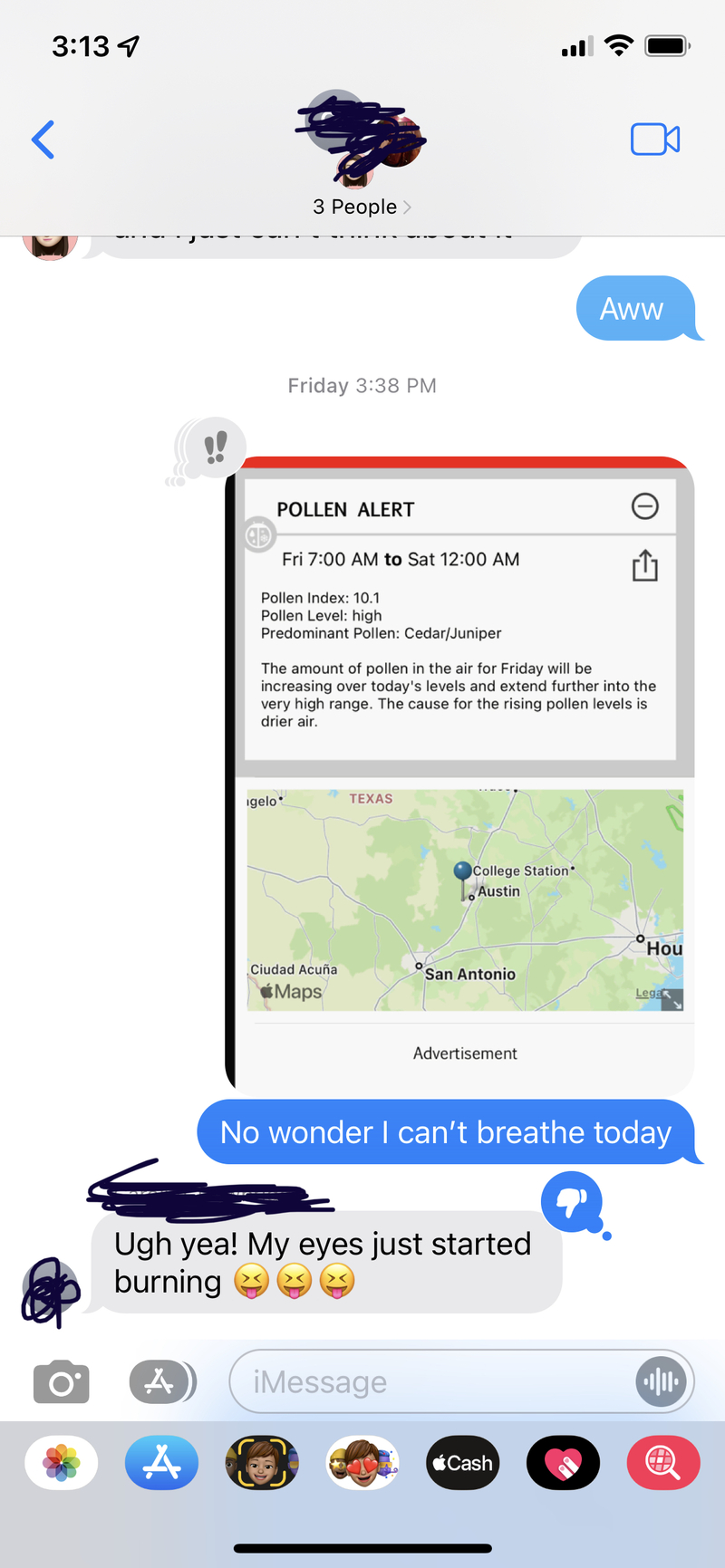Multimodal Literacies MOOC’s Updates
Update #1: Multimodality in texting across different platforms
I send and receive text messages daily. Some of my text chats are with individual friends or family members, but I most often interact with group chats. Each individual message is represented by a speech bubble, used in comics to denote speaking, implying that the practice of texting is something in between writing and speech.
I have an iPhone, and I use the Messages app for the majority of my texts. Some of my group chats are with friends who all have iPhones. This means that for each of us in the chat, our speech is represented in blue bubbles, and everyone else's speech is represented in grey speech bubbles. We can hold down previous messages that have been sent in the stream and post a reaction (e.g. thumbs up, heart), which will be visible to all others in the chat. We can also hold down a message to reply directly to a particular message in the thread, which serves to provide better coherence when several topics are going at once.
Some of my other group chats include at least one non-iPhone user. When this is the case, the iPhone user's message appear to that user in green speech bubbles, and others' messages appear in grey bubbles. As an iPhone user, I can still hold down a message and send a reaction. For example, if I choose to "heart" a message, I can do this, and the icon of a heart will still appear on my end. However, for everyone else in the chat, this reaction will take the form of a new speech bubble from me, with "Liz loved ['quoted text']". This is also how the message will appear to other iPhone users in the chat. Rather than facilitate coherence by being able to show one's reaction to a particular message in the stream, as is the case when everyone in the chat has is using iOS, in my experience, users find it jarring and annoying to read a textual interpretation of the reaction, with the quoted text repeated as a new message.
Similarly, emojis can get "lost in translation" when sent by a user of one platform to a user of another. This can lead to some misunderstandings, either hilarious or embarrassing, depending on the emoji that appeared on the receiving end.
Emojis also have their own grammar and agreed-upon cultural meanings, and if one is unaware of the rules or meanings of a given emoji, this can also lead to confusion or embarrassment. For example, if someone wants to say "You're a peach" but wants to be hip and writes, "ur a 🍑", this person will inadvertantly reveal themselves as being from a generation that used shortcuts such as "ur" (autocorrect renders this shortcut unnecessary), and unaware of the signification of the peach emoji.
A multimodal analysis of texting chats between users of different platforms (e.g. iOS vs. Android), compared with chats between users of the same platform (all iOS chats and all Android chats) could be useful for many purposes. For one, it could reveal how cohesion and coherence are collaboratively built in these different types of spaces (e.g. Do iOS users use reactions more when only in iOS chats? Do Android users send more gifs to react? What strategies do Android users employ to maintain coherence and cohesion when several topics are occurring in a chat?).
I also think it would interesting to compare these practices to the attitudes of users of different platforms--in my experience, people tend to have strong feelings about and allegiances to a particular platform, and opinions about users who employ a different platform.
Forensic analyses of the usage of affordances such as emojis in text messages have also been used in court cases (e.g. Was the defendant really just being playful when he sent a squirt gun emoji to the victim?).
For some interesting articles on emoji grammar and forensics, please see the following:
https://www.bustle.com/articles/32092-emojis-have-grammatical-rules-and-youre-probably-already-following-them
https://emojidb.org/forensic-science-emojis
https://h11dfs.com/emoji-forensics/




Interesting and relevant observations have been pointed out.